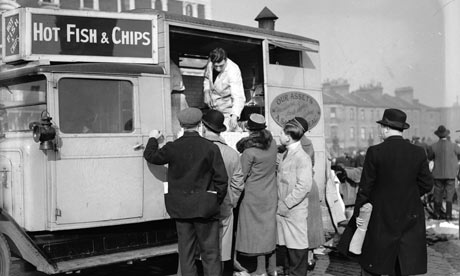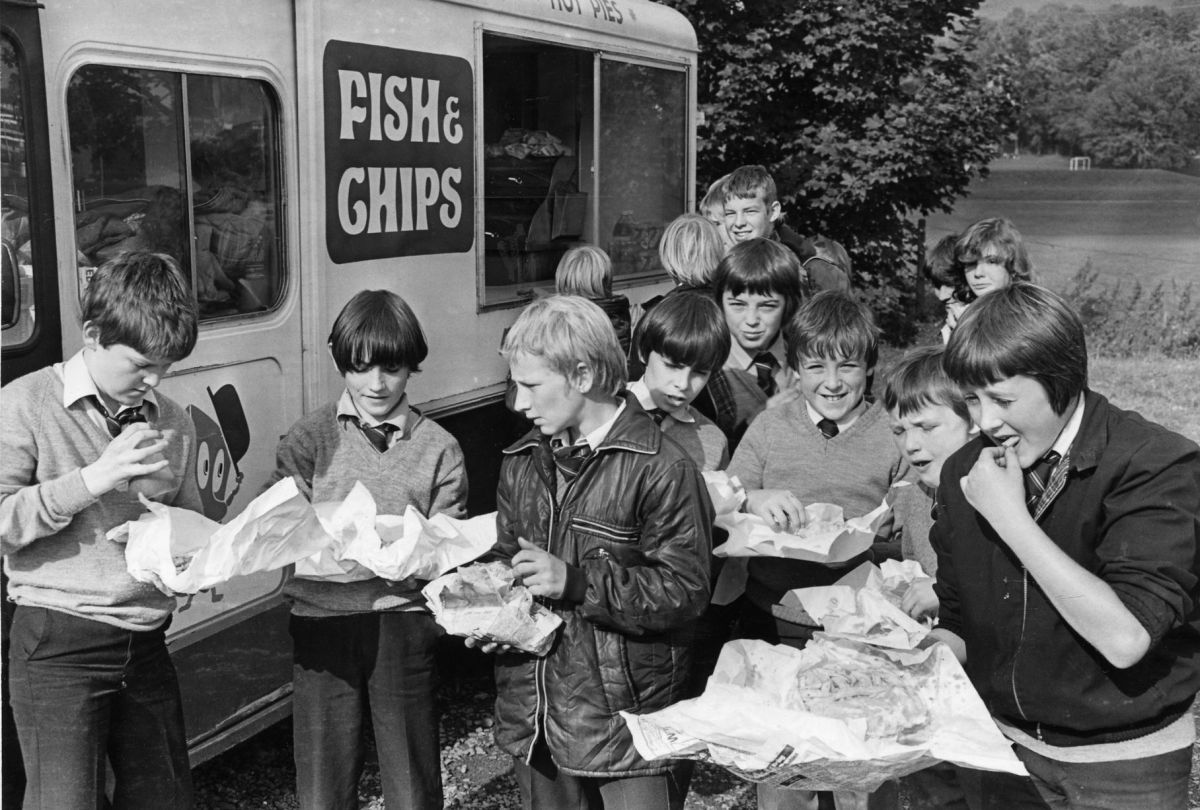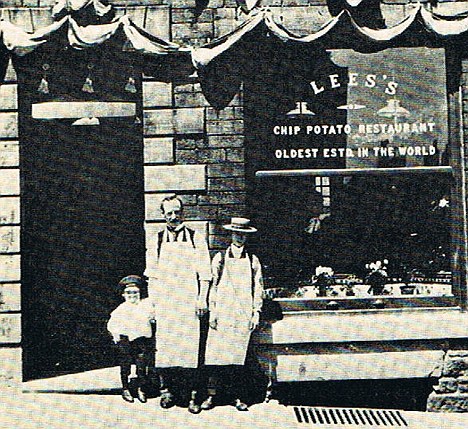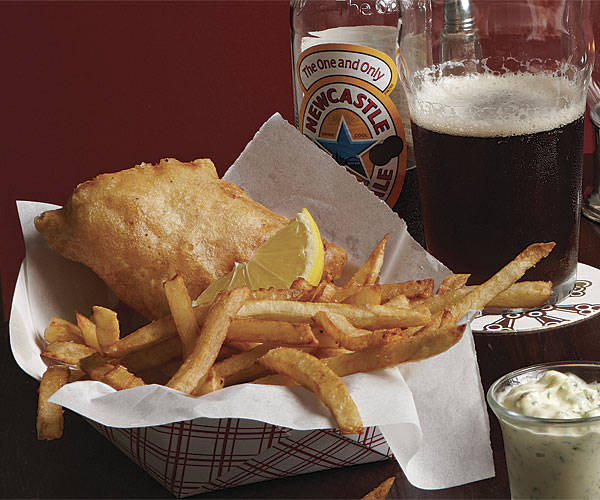History of fish & chips


Fish & chips was introduced to the UK, specifically, London by Jewish immigrants from Portugal and Spain. The first dish dates back to the 17th Century, and the first dish was served in the 1860 by the the Malin family of London and the Lee family of Mossley, near Manchester . Anglotopia.net adds an interesting history about this dish, “American President Thomas Jefferson described eating ‘fried fish in the Jewish fashion’ on a visit to the capital at the end of the 18th Century and even Charles Dickens makes reference to a fried fish warehouse in Oliver Twist.” Till this day, fish & chips is regarded as a cultural symbol of the UK. Jta.org continues by saying, “Many historians say that deep-fried, cut-up potatoes were invented in Belgium and, in fact, substituted for the fish during hard times.” Others say the french fries was invented by the French as the historic-UK.com mentions. Historic-UK.com continues by saying, “Both Lancashire and London stake a claim to being the first to invent this famous meal – chips were a cheap, staple food of the industrial north whilst fried fish was introduced in London’s East End.”
A fun fact about this dish as stated by historic-UK.com, “In 1999, the British consumed nearly 300 million servings of fish and chips – that equates to six servings for every man, woman and child in the country. There are now around 8,500 fish and chip shops across the UK – that’s eight for every one McDonald’s outlet, making British Fish and Chips the nation’s favourite take-away.”

Picture from dailymail.co.uk. “Trust in cod: Lees’s chip shop in Lancashire a century ago. The original owner starting serving fish and chips in 1863.”
Food Science of fish & chips
As Samin Nosrat mentions in her book Salt, Fat, Acid, and Heat; “No proper brit would consider eating a plate of fish and chips without malt vinegar.” In her book she mentions that the acid, in this case, vinegar helps provide balance to the different flavors in the dish. Salt, on the other hand, enhances the flavor with fat. Also, the fat in the fried oil provides aroma as well. During cooking in fried oil, the fish protein denatures then coagulates giving the fish a different texture. If you would like to see how fish or meat cooks. Look up the recipe for ceviche. The recipe uses the acid of citrus such as lime or lemon. This can be easily be done at home, soak the fish in vinegar. Let it sit for a while until you see it turn white. This is the process where the protein in fish starts to denature and coagulate. Feel free to experiment with acid and heat and you will notice that both have the same affect on protein, which is denaturation (protein strands unwind) and coagulation (protein strands clump up).
The second part to this is perfecting the right crispy affect on the outside of the fish & chips. A reaction called Maillard reaction occurs for both the fish & chips. This where the sugars and protein break down to form a crispy layer on the fish & fries. When the crispy layer forms; it prevents any more oil from being absorbed into the fish and chips. Also, the outside surfaces of the fish & chips become dehydrated. As fincooking.com mentions, “Browning is quick and thorough because the hot liquid fat delivers heat to even the smallest crevices on a food’s surface. In the initial moments of frying, as the surface dehydrates, it forms a crust that inhibits further oil absorption, while continuing to conduct heat to the interior of the food, where the heat causes starches to gelatinize (as in french fries), proteins to denature (in fried chicken), and fibers to soften (in fried zucchini).” This reaction is what gives the fish & chips its golden-brown color and unique flavors that we all enjoy so much.
Recipe
Please see website for full recipe: https://www.finecooking.com/recipe/fish-and-chips-with-tartar-sauce
Also, fine cooking provides these tips while cooking:
- Cut food into similar-size pieces so they fry at the same rate.
- To help breadcrumb coatings dry and adhere, let raw breaded food sit on a rack for up to 30 minutes before frying.
- Always deep-fry in a deep pot and fill it only a third or half full with oil. Tall, narrow pots help extend the oil’s frying life, since less of the oil’s surface is exposed to oxygen.
- Use a deep-fry thermometer and adjust the heat while frying to maintain a steady temperature.
- Fry in small batches to prevent the oil temperature from dropping too low, which can lead to greasy food.
- Briefly drain fried food on a rack or absorbent paper.
- Season food immediately after frying so the seasoning adheres to the hot food.
- If not eating right away, transfer each batch of fried food to a 200°F oven to keep it crisp.
- Let the oil come back up to frying temperature between batches.
- Never leave oil unattended on the stove-it can overheat and become a fire risk.
Enjoy! and whatever you call it french fries, chips, or pommes frites! everyone around the globe enjoys this comfort food with a beer!

References
1. Parker, Vicky (August 17, 2015). Brit Food: A Brief History of Fish and Chips. Website: https://www.anglotopia.net/british-identity/british-food/brit-food-brief-history-fish-chips/.
2. Fein, Ronnie ( Fish and chips’ surprising Jewish history. Website: https://www.jta.org/2019/11/06/food/fish-and-chips-surprising-jewish-history.
3. Castelow, Ellen. Historic UK Ltd. The History of Fish and Chips. Website: https://www.historic-uk.com/CultureUK/Fish-Chips/.
4. Dennison, Matthew (8 May 2010). The Portuguese gave us fried fish, the Belgians invented chips but 150 years ago an East End boy united them to create The World’s Greatest Double Act. Website: https://www.dailymail.co.uk/news/article-1275320/The-Portugese-gave-fried-fish-Belgians-invented-chips-150-years-ago-East-End-boy-united-create-The-Worlds-Greatest-Double-Act.html.
5. Nosrat, Samin (April 25, 2017). Salt, Fat, Acid, Heat: Mastering the elements of good cooking. Page 107, 64, 113, and 139-140.
6. Joachim, David and Schloss, Andrew. Fine Cooking #121. The Science of Frying, pp. 38-39. Website: https://www.finecooking.com/article/the-science-of-frying.
7. Stein, Rick, Fine Cooking Issue 118. Fish and Chips with Tartar Sauce. Website: https://www.finecooking.com/recipe/fish-and-chips-with-tartar-sauce.